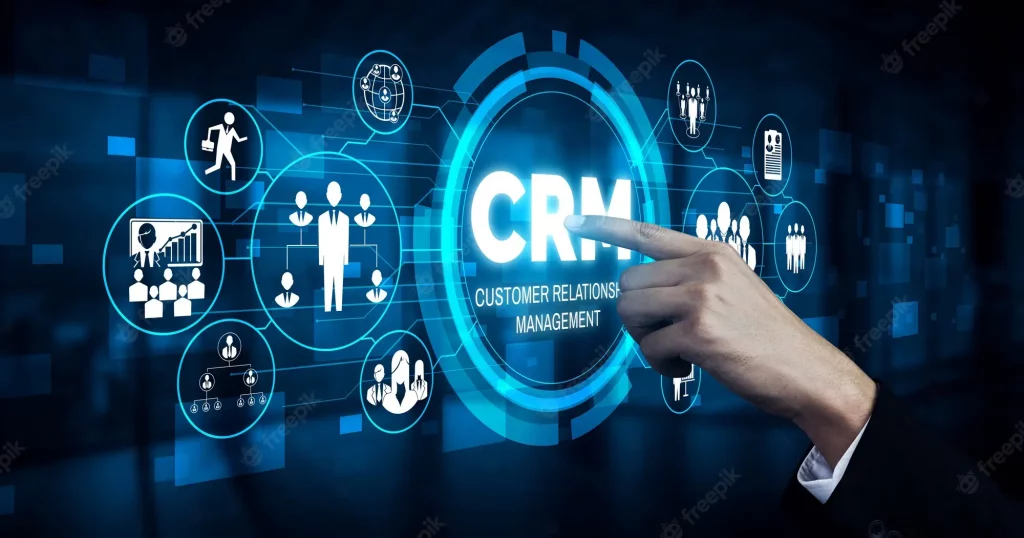At Simply Contact, we specialize in creating personalized customer support solutions that drive business growth and customer satisfaction. Let us help you elevate your customer experience and stand out from the competition.

Every business executive knows that customer satisfaction is always generated in the company's overall income and that qualitative service is an essential element for achieving high profits. Resolving a problem on the first contact with a call center service is the main objective of remote support because each additional action after it whether incoming or outgoing calls, visits, applications and so on require labor otherwise avoidable.
How to improve call center customer service?
Service Level is one of the most common indicators showing a call center's productivity and its level of correspondence to a company's target figures. In other words, this index characterizes the percentage of the total call center occupancy an employee has been able to take over in a time period set by their manager.
The Service Level usually takes about 20 seconds but can occasionally be altered by an enterprise's management depending on the type of products it manufactures.
How is call center service level calculated?
The servicing level indicator consists of two key elements:
- Percentage — characterized by the rate at which an application is accepted.
- Call center service levels standards — manually set by the executives of a company.
These two indexes ratio is what Service Level eventually boils down to. When 80% of the requests are accepted within the 20 seconds time range — the result is documented as the 80/20 ratio. Let’s look at each part of the puzzle in more detail.
What is the service level in a call center in percentages?
This component can be represented in two different formulas:
- Generalized simple calculation
(Number of calls received over the set time interval / Overall number of incoming calls on the line) * 100%.
The drawback of this call center service level formula is that it disregards the number of lost calls. Many experts in this industry consider a call to be wasted if the duration of an unserved call has reached over 5 seconds (up until this threshold, there is a high possibility of a wrong phone number input on the side of a customer).
- The next ratio takes such calls into consideration
(The number of calls received in the set time interval / (Overall number of incoming calls on the line - Over 5 seconds-long calls)) * 100%.
Benchmarks established by the management
Customer service levels widely accepted in a company are conditional figures determined mostly by the kind of manufactured products and specifics of the market environment. In an eventful niche of the business, long periods of time clients spend waiting in line can be hazardous for the financial well-being of the company, while the clients are not going to deem the delay too much of an inconvenience if their problems were eventually resolved by the technical support of other faculties.

From a customer’s point of view, the perfect deal would be an instantaneous call acceptance where the Service Level would draft the 100/0 ratio. However, most companies will not implement such conditions for their clients because of the increased immanent personnel expenses. At the same time, in peak periods when the line is overflown by incoming calls, the company may suffer big customer churns and generally damage its reputation. Finding the optimal ratio is the main task for large business executioners substantial majority of which show a profound understanding of the expectations of their clients.
Most enterprises follow the 80/20 rule, though the threshold may be raised to 90% in 10 to 20 seconds in highly competitive business realms. Entrepreneurs who are less ambitious and struggle in less competitive and saturated fields can adhere to something like a 70/30 ratio.
Call center occupancy formula
Occupancy Level is the amount of time an operator spends receiving incoming calls and applications. For instance, if a consultant spends 54 minutes of each hour communicating with a client, this sums up their occupancy level to 90% (54 / 60). However, this doesn't conclude that the operator was slacking off for the rest of the hour. They could have spent the rest of the time on other tasks connected to the production process such as sending emails to the managers, technical support assistants, meetings, gatherings, etc.

Bearing in mind all these functions we can represent the occupancy definition call center as:
(Time spent working with a client / (The period of time an assistant is available - Time spent on auxiliary working activities)) * 100%.
This formula isn't, in fact, universal and is subject to change depending on the peculiarities of the business it is implemented in (level of competition, season, etc.) and metrics established in a company (time spent talking on the line, logging in and logging off the system, etc.).
The percentage is suggested to be kept within 85-90%. Exceeding this threshold might lead to overpressure on employees, their subsequent motivational burnout, a decrease in the level of consulting quality, and the incapacity to perform auxiliary functions. The numbers below the threshold may indicate that the number of personnel is not optimal for achieving the highest efficiency within the given conditions, inadequate marketing or advertising strategy, and poor management control.
How to improve the service level in a call center?
The level of servicing is a KPI of high importance for the work of subdivisions, eventually influencing a company's financial success directly. A company's management should implement preventative and reparative actions at all times to facilitate the optimal quality of the employees' operation. We have compiled a list of ten tips to help you improve call center performance in your company.
The rate of interest in the success of a company
Be generous with rewards for the best employees in the corporation who fulfill its objectives in time — “Lit the fire in their souls, not under their chairs”
Healthy competition between different members of personnel, structural subdivisions, and branch offices is always advantageous for a company. The important thing here is continuous monitoring of the situation inside, keeping track of any initial disputes in the team, and attempts to put one’s own interest over the interest of the whole enterprise, cutting problems short.
Motivational burnout problem
Most people consider call center labor a part-time job, which leads to personnel turnover at a constant level of 20-40%, attributable to intrinsic (employee compensation, poor management organization, training periods) and objective conditions (high level of stress put on a worker on a steady basis) that are impossible to avoid but can be compensated.

Here are some factors lowering the employees draining rates:
- Qualitative training;
- Flexible working schedule;
- Lounge zones to relax in during breaks from work;
- In-house unformal communication possibility;
- Career ladder;
- Loyalty in the management style;
- Corporative culture;
Optimal personnel management
This point implies the right distribution of the existing human resources while keeping up with the declared servicing level, based on the following factors:
- The density of the calls during the analogical period (time of day, season, etc.);
- Currently running advertising and marketing campaigns;
- Time spent on auxiliary functions and working on alternative communication channels such as chats, email, and social networks.
- Inadequate labor planning will cause exhaustion of the operators, the amount of time a client spends hanging on the line, and decreased accessibility of the services, which in turn will affect the loyalty and satisfaction levels of the business partners.
Qualitative scripts
A script is an instrument that substantially increases the possibility of the successful deal closing, application serving rates, and the productivity of each employee, and makes it easier to audit the calls.
Scripts help operators in multiple ways:
- Smoothen the learning curve with innovations, speeding up novices' adaptation period;
- Feeling more confident during the conversations with the clients, holding the subject line;
- Lead a client to the target action;
- Keeping up the company’s declared servicing level.
Meetings and consultations
Conducting personal and team meetings with curators — more experienced employees and supervisors allows to:
- Realize the mistakes and omissions made by listening to the recorded calls in order to not recognize and eliminate them in the future;
- Work over the frequently asked questions and objections;
- Perform training, experience, and advanced knowledge in the corresponding field of business exchange;
- Attaining support from more experienced employees during real-time conversations will help novices to build up the courage and learn the essentials of the work faster.
Common KPI indicators
Every technical support specialist should know and recognize the key assessment parameters that they are going to be judged by. These values determine their further professional and financial growth, so they should not be taken lightly.
Some of the main ones are:
- Productivity — the number of problems resolved after the first application as well as denials;
- Availability for call acceptance per unit of time;
- General satisfaction of a client;
- Servicing quality;
- Financial indicators, e.g. sales.
Advanced experience in this sphere shows that the most important of them all is an indicator of the satisfaction level of the clients providing the majority of the financial gains for the business. The following methods are helpful for keeping track of the servicing quality dynamics:
| Method | Periodicity | Selection |
| Manual assessment | Monthly | 3-6 calls |
| Reviews analysis | Monthly | All |
| Satisfaction level | Quarterly | Depending on the overall number of clients |
| Secret buyer | Monthly | Every employee |
| Automated assessment | Online | All |
Client segmentation using IVR
Client satisfaction rates can be increased using the right routing of IVR, which makes possible the following benefits:
- Reduction of the waiting in line time;
- A substantial reduction of human resource expenses (up to 60%) due to the lowered pressure on each support specialist;
- Optimal calls distribution to the right subdivisions, which makes a solid premise for resolving a problem in the first application;
- CRM integration;
- Streamlining advertising and informational servicing.
- Besides that, the following factors often irritating clients are lowered:
- Long cyclical music while waiting in line;
- Inability to talk to address a real person with their issue;
- Multi-stage menu.
CRM systems
Adequate and proper implementation of CRM tools facilitates easier closing of the following tasks:
- Convenient consolidation of client information in a single database;
- Executive control over the work of their personnel;
- Choosing the target proposition based on the client's actions history;
- Deciding on a relevant conversation script;
- Automated contacts base distribution for an outbound organization;
- Profits planning;
- Automatization of the routine and repetitive tasks of the personnel;
- Lowering the probability of data leakage, and safeguarding proprietary information.

Among the most frequently used CRM systems in call centers are:
- Bitrix24 CRM
- 1C CRM
- VtigerCRM
- TimeDigital CRM
- OneBox
- AmoCRM
- RetailCRM.
Working time management
One relevant methodology for planning employee occupation level is a WFM system. The system represents a module that allows for better stress distribution, schedule generation, and personnel assessment.
The positive effects it has on business are as follows:
- Number of employees optimization owing to the forecasting of the amount of work;
- Personnel distribution according to their skills and competency;
- Equal and systematical stress distribution among the support specialist;
- Reduction of the number of paid overtime;
- Compliance with the working time regime.
- Software Optimization
Adequately chosen and relevant software provides an increase in the level of servicing quality and resolving the following tasks:
- Complex ACD determines the amount of time for processing and the value of the accepted or lost application;
- Properly adjusted routing to the required technical assistant, leading to a problem resolve in the first application;
- Attaining the ability to track the level of servicing in real time;
- Simplified user interface leading to a more pleasing user experience with the service;
- A consolidated database that prevents the possibility of duplicating the same information in different systems;
- The possibility of remote operation allows for the emergency recruiting of additional human resources in the technical support division, providing a more flexible working schedule for the current employees.
Conclusion
Maintaining the declared servicing quality level is the main objective of any contact center. Competent management, staff optimization, and the amount of work they do are not only a chance to drop expenses but also to increase the clients' loyalty, facilitating the business's general financial success.
Get fast answers to any remaining questions
Thank you.
Your request has been sent successfully.
Your request has been sent successfully.



